
Ragnar Anton Kittil Frisch was an influential Norwegian economist known for being one of the major contributors to establishing economics as a quantitative and statistically informed science in the early 20th century. He coined the term econometrics in 1926 for utilising statistical methods to describe economic systems, as well as the terms microeconomics and macroeconomics in 1933, for describing individual and aggregate economic systems, respectively. He was the first to develop a statistically informed model of business cycles in 1933. Later work on the model, together with Jan Tinbergen, won the first Nobel Memorial Prize in Economic Sciences in 1969.
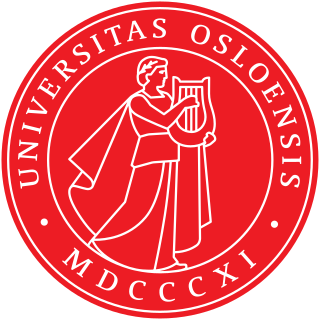
The University of Oslo is a public research university located in Oslo, Norway. It is the oldest university in Norway and consistently considered the country's leading university, one of the highest ranked universities in the Nordic countries and one of world's hundred highest ranked universities. Originally named the Royal Frederick University, the university was established in 1811 as the de facto Norwegian continuation of Denmark-Norway's common university, the University of Copenhagen, with which it shares many traditions. It was named for King Frederick VI of Denmark and Norway, and received its current name in 1939. The university was commonly nicknamed "The Royal Frederick's" before the name change, and informally also referred to simply as Universitetet.

Norwegian Computing Center is a private, independent, non-profit research foundation. NR carries out contract research and development in the areas of computing and quantitative methods for a broad range of industrial, commercial and public service organizations in Norway and internationally. NR is one of Europe's largest research environments in applied statistics and its projects cover a large variety of applied and academic problems. NR's offices are located near the university campus Blindern in Oslo, and adjacent to Oslo Science Park (Forskningsparken).
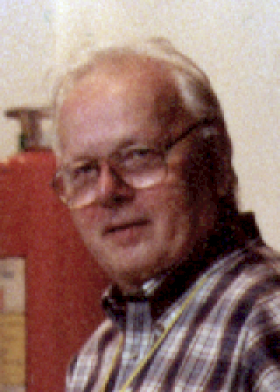
Kristen Nygaard was a Norwegian computer scientist, programming language pioneer, and politician. Internationally, Nygaard is acknowledged as the co-inventor of object-oriented programming and the programming language Simula with Ole-Johan Dahl in the 1960s. Nygaard and Dahl received the 2001 A. M. Turing Award for their contribution to computer science.

Kristine Elisabet Heuch Bonnevie was a Norwegian biologist. She was the first woman to graduate with a science doctorate in Norway, Norway's first woman professor, a women's rights activist, and a politician for the Free-minded Liberal Party. Her fields of research were cytology, genetics, and embryology. She was among the first women to be elected to political office in Norway. She suggested the epic voyage of her graduate student Thor Heyerdahl on the raft Kon-tiki, a voyage memorialized in the Kon-Tiki Museum, Oslo.

GeirThomas Hylland Eriksen is a Norwegian anthropologist known for his scholarly and popular writing on globalization, identity, ethnicity, and nationalism. He is currently Professor of Social Anthropology in the Department of Social Anthropology at the University of Oslo. He has previously served as the President of the European Association of Social Anthropologists (2015-2016), as well as the Editor of Samtiden (1993-2001), Norsk antropologisk tidsskrift (1993-1997), the Journal of Peace Research, and Ethnos.
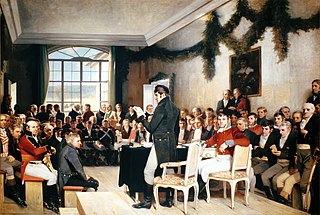
The Norwegian Constituent Assembly is the name given to the 1814 constitutional assembly that adopted the Norwegian Constitution and formalised the dissolution of the union with Denmark. The meetings took place at the Eidsvoll Manor in the village of Eidsvoll Verk in the Eidsvoll parish in Akershus county, Norway from 10 April to 20 May 1814. In Norway, it is often just referred to as Eidsvollsforsamlingen, which means The Assembly of Eidsvoll.
Norwegian Research Center for Computers and Law at the Faculty of Law, University of Oslo is the second-oldest academic institution in the world working specifically with the interrelationship of law and information / communication technology. Today, the NRCCL is one of the world leading institutions in the field of information/communication technology law.
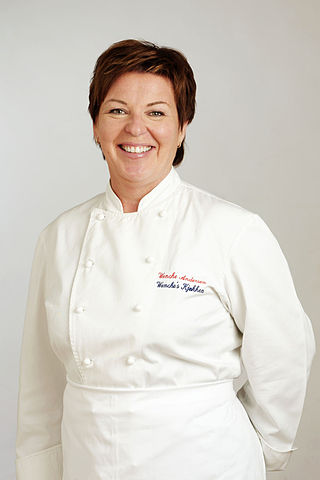
Wenche Andersen is a Norwegian television chef.

The Norwegian Centre for Human Rights is a multidisciplinary research centre at the University of Oslo Faculty of Law. From 2001 to 2015 it was also the ICC (UN) accredited Norwegian national human rights institution.

Lene Auestad is an author and a philosopher from the University of Oslo. She has written on the themes of prejudice, social exclusion and minority rights, and has contributed to public debates on hate speech.
Alan Steele Milward, was a British economic historian specialising in Western Europe and the United Kingdom in the 20th century.
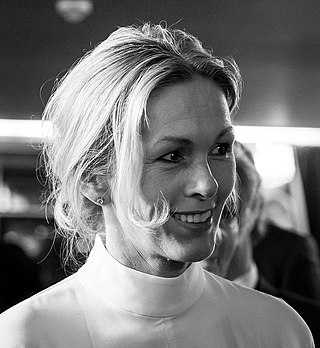
Anita Krohn Traaseth is a Norwegian business executive and author. She was director of Innovation Norway from 2014 to 2018 and is currently chair of the board for a number of companies. She is a former managing director of Hewlett-Packard Norway. She lives in Oslo.
Aslaug Sverdrup Sømme was a Norwegian plant scientist and geneticist.

Erika Hagelberg is a British Evolutionary geneticist and Professor of Biosciences at the University of Oslo. She works on ancient DNA and pioneered a means to extract DNA from bones. Her research has applications in evolutionary biology and forensic science.
Mioara Mandea is Head "Science Coordination" Department, Strategy Directorate at the Centre National d'Etudes Spatiales. Mioara Mandea’s research has had a broader significance and a huge impact in the community. One of her accomplishments of incalculable importance is the assembling of the geomagnetic time series at Paris, opening the path to other long magnetic series as Munich and Bucharest and dedicated studies. Over her entire career, she has been focused on the geomagnetic field and its variations, using data derived from magnetic observatories and satellites participating in elaborating useful models, such as the IGRF series. With GRACEFUL, a Synergy project of the European Research Council in the framework of the European Union’s Horizon 2020 Mioara Mandea continues her precursory work related to the dynamical processes in Earth's fluid core seen by both magnetic and gravity variations.
Klaus Murbræch is a retired Norwegian football striker.
Anne Vibeke Roggen is a Norwegian philologist, known for her translations from Latin and among the country's foremost experts on the humanist Niels Thomessøn.
The Rosing Prizes are awarded to people who have made contributions to the Norwegian IT community, it is the Norwegian Computer Society that organizes the award ceremony. The Norwegian Computer Society was established in 1953 in Oslo and has over 8500 members, making it one of the oldest computer societies in Europe. It is also a member of the International Federation for Information Processing, the Council of European Professional Informatics Societies (CEPSIS) and the Nordic Data Union (NDU).
Carl Hjortsjö is a Swedish dentist. He became Head of Institute of Clinical Dentistry, Faculty of Dentistry, at University of Oslo in 2021.
















